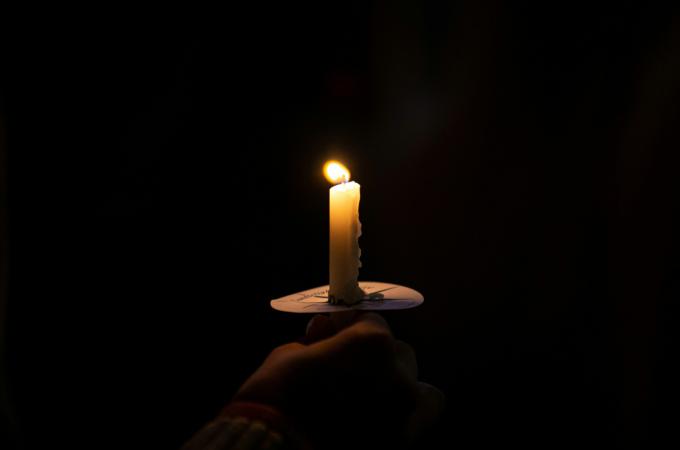Candles and feast of Presentation
Q. We just celebrated the feast of the Presentation of the Lord, but in our parish there was no blessing of candles. I am aware that in some other parishes, the faithful are permitted to bring their own candles to be blessed along with the candles that the parish is going to use for the year.
A young priest in our parish said that the blessing was designed to be a communal event where everyone carries a small candle in procession; he said that since our parish struggles financially, we could not afford to do this and so the blessing was omitted. Please clarify what is proper. (Richmond, Virginia)
A. The feast of the Presentation of the Lord is celebrated 40 days after Christmas and marks the time when Mary and Joseph brought the infant Jesus to the Temple to be dedicated to the Lord, as was the Jewish custom for the firstborn male.
Since at least the 11th century, the blessing of candles has been a regular part of this feast. The solemnity of that blessing may vary, and it may or may not include a procession of the faithful. More often, in my experience, worshippers simply hold lighted candles in their pews while the priest pronounces the blessing.
Sometimes parishes provide the candles; sometimes parishioners are encouraged to bring their own. Everyone is invited to bring their candles home, ideally to be used at times of family prayer.
In explaining this long-standing custom, Pope Benedict XVI, writing then as Cardinal Joseph Ratzinger, explained in his book "Seek That Which Is Above" that "the warm candlelight is meant to be a tangible reminder of that greater light that, for and beyond all time, radiates from the figure of Jesus."
One of the prayers of blessing offered for the priest's use has, I think, a particular beauty. It says: "O God, source and origin of all light, who on this day showed to the just man Simeon the Light for revelation to the gentiles, we humbly ask that, in answer to your people's prayers, you may be pleased to sanctify with your blessing these candles, which we are eager to carry in praise of your name, so that, treading the path of virtue, we may reach that light which never fails."
Q. Could you explain what the Church's official position is on the use of the Latin language in the Mass? (In one nearby parish, much of the Mass is celebrated in Latin most of the time.) (Atlanta)
A. Priests are permitted to celebrate Mass in the Latin language. In fact, the Second Vatican Council's Constitution on the Sacred Liturgy said: "The use of the Latin language is to be preserved in the Latin rites. But since the use of the mother tongue, whether in the Mass, the administration of the sacraments or other parts of the liturgy, frequently may be of great advantage to the people, the limits of its employment may be extended" (No. 36).
In 2007, Pope Benedict XVI issued a "motu propio" letter, "Summorum Pontificum," which said that any priest of the Latin-rite church may, without any further permission from the Vatican or from his bishop, celebrate the extraordinary form of the Mass. The first missal containing the extraordinary form, which is also known as the Tridentine rite, was published by St. Pius V in 1570. The rite was revised occasionally, the final revised version being published in 1962. The extraordinary form was replaced by the Novus Ordo or New Order of Mass beginning in 1969.
Virtually every diocese in the United States now has at least one regularly scheduled Mass each Sunday in the extraordinary form; in addition, some dioceses also offer the ordinary form of Mass celebrated in Latin. Catholics desiring to participate in Latin Masses are best off contacting their local diocese to find out when those Masses are scheduled.
- Father Kenneth Doyle is a columnist for Catholic News Service



















